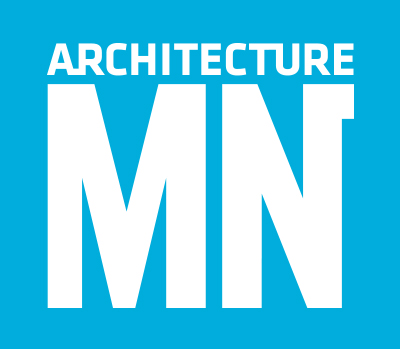Are you looking for a thrilling design destination for a weekend getaway this fall or winter? Architecture MN highly recommends Fort Worth, Texas, where two landmark museums—the Kimbell Art Museum and the Modern Art Museum of Fort Worth—sit across the street from each other, anchoring one of the most architecturally distinctive cultural districts in the country. Editor Christopher Hudson and Twin Cities architectural photographers Corey Gaffer, Morgan Sheff, Pete Sieger, and Peter VonDeLinde recently returned from a visit to the Kimbell and the Modern with an array of images and a story to tell about timeless modern design.
By Christopher Hudson
“Louis Kahn’s Kimbell Art Museum is one of my all-time favorite buildings. It has everything we architects aspire to in our work: elemental form, tactile materials, powerful connection to landscape, and masterful use of light and shadow.” —Architect Joan Soranno, FAIA
“Nine out of 10 art museum directors will tell you that the Kimbell is their favorite museum building. The collection is small but sublime, the light is captivating, and the galleries offer an intensely spiritual experience. During a recent gathering of museum directors there, I missed our departing bus because I’d become oblivious to everything but the experience of the space.” —Minneapolis Institute of Art director Kaywin Feldman
“I first visited the Kahn Building on a quick layover, and I streamed through a Renoir show without seeing a single painting. Clearly innovative in its conception and construction, the architecture, engineering, and landscape are truly integrated.” —Architect Julie Snow, FAIA
“The buildings are very similar, and they’re also very different,” says Kimbell Art Museum director Eric Lee. “The Kahn Building has more gravitas, weight, and solidity—it hearkens back to antiquity with its concrete walls and use of travertine, for example. The contemporary, high-tech Piano Pavilion has more lightness and transparency. I would also say the quiet, inward-looking Kahn Building is more introverted and the Piano Pavilion more extroverted, with its views that engage its surroundings.”
Lee is referring to the Kimbell’s two buildings: the original 1972 building by modern luminary Louis Kahn and the light-filled 2013 pavilion by noted Italian architect Renzo Piano. The two structures lie 200 feet apart, with the newer building subtly and deferentially mirroring the original in scale and proportion.
The serene approach to the Kahn Building from the west—past flanking reflecting pools, through a grove of yaupon hollies, and beneath one of three barrel-vaulted concrete porticoes—gives first-time visitors an early sense of the architecture they’ll encounter inside. The cycloid barrel vaults continue in parallel repetition in the lobby, shop, restaurant, and galleries, but with a stirring twist: A gull-wing-shaped aluminum apparatus running along the apex of each vault reflects light from a skylight above back onto the smooth, curving concrete.
The resulting spatial character is difficult to capture in words. “The Kahn galleries are both intimate, with their unusually low walls, and monumental, with the concrete vaults overhead,” says Lee. “And the light has an ephemeral quality. It’s an extraordinarily subtle building.”
“When I came to the Kimbell in 2009, I found it difficult to even raise my voice in the building,” adds Lee, who had first encountered Kahn’s work as an undergrad at Yale. “I had such reverence for the design. It’s sacred space.”
At roughly 100,000 square feet, the Piano Pavilion allows the Kimbell to present both its permanent collection and loan exhibitions simultaneously. It also houses event space, an acoustically optimized auditorium, a library, and classrooms. But the added functionality isn’t the source of the wow factor; it’s the quality of the light that enters the building through glass walls, light wells, and the roof itself.
The roof of the pavilion’s east wing, for example, is composed of a layering of mechanical aluminum louvers, fritted glass, and 100-foot-long beams of laminated Douglas fir. Taut white scrims stretch between the beams for further diffusion of the natural light.
Other benefits of the expansion? It added underground parking that reestablishes the west entrance to the Kahn Building as the Kimbell’s front door. And the newly defined outdoor “room” between the two buildings has inspired the museum to organize festivals themed for the openings of special exhibitions. If you’re traveling to Fort Worth in spring, summer, or fall, consider timing your visit with an outdoor Kimbell concert or show.
THE KIMBELL ART MUSEUM
Architects: Louis Kahn (original building) and Renzo Piano (pavilion)
Years completed: 1972 and 2013
Best view of the buildings: Looking north from Lancaster Avenue at the Kahn’s iconic barrel vaults and the Piano’s glass wall and elaborate roof structure
Collection: Antiquities and the art of Europe, Asia, the Ancient Americas, Africa, and Oceania


